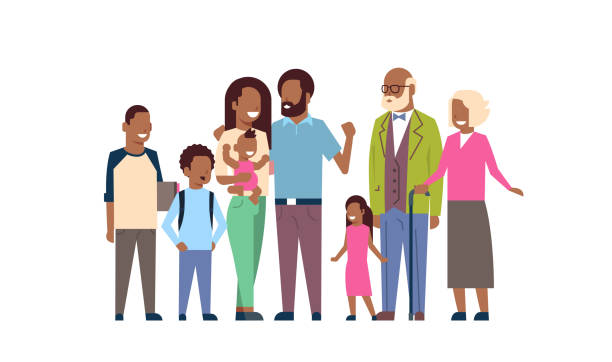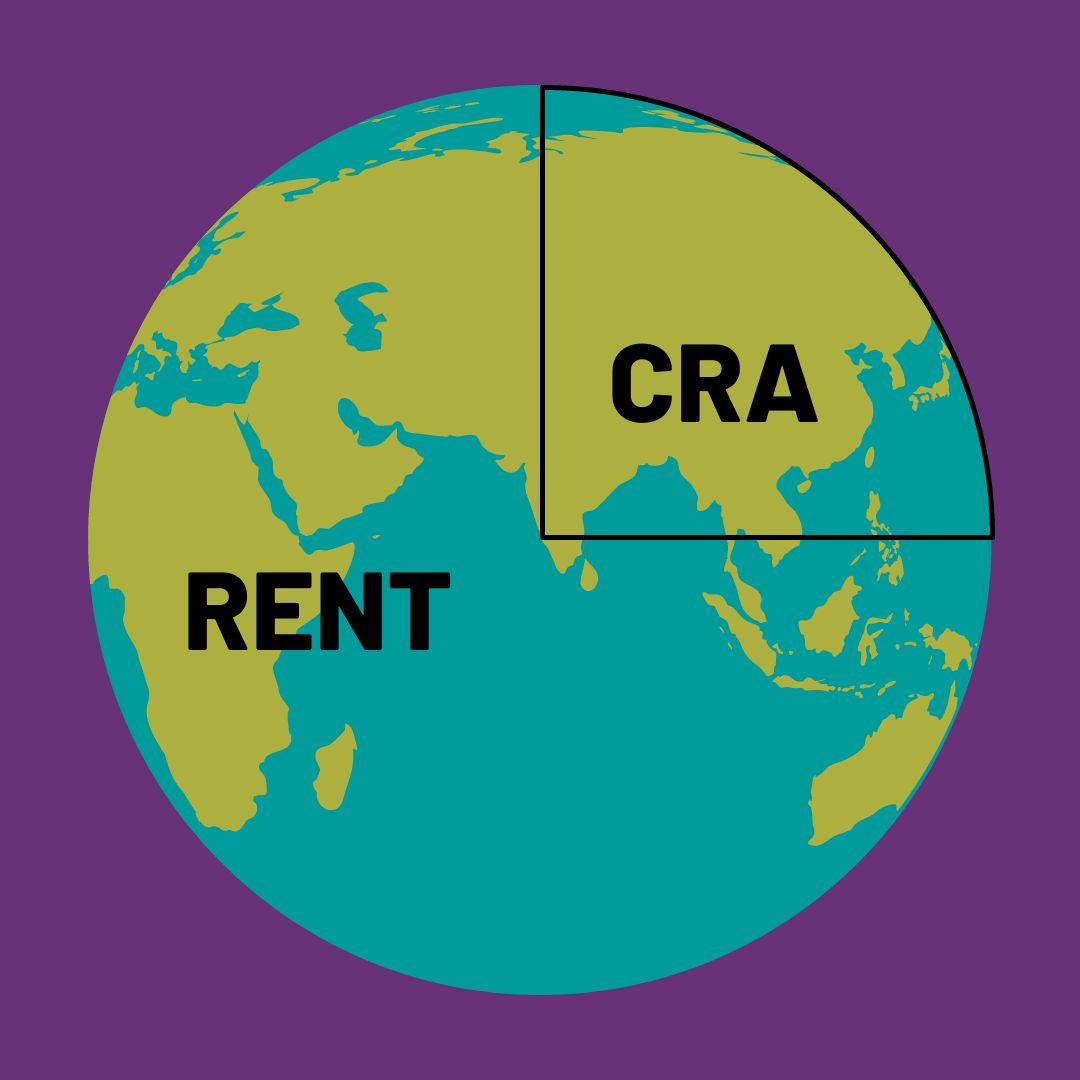SHARON'S CORNER
Pumpkin spice latte season is here! And yes, I love my pumpkin spice lattes! Some say they start too early (like Halloween costumes being on sale in August) but I say, they don’t stay on the menu long enough through the year although I’m sure my doctor is happy about that. Health always first...in moderation, right?! ☺
The summer was busy with updating old blogs and writing a few new ones. There are just so many great tax topics but never enough time to write as much as I’d like. A couple of new blogs since my last newsletter including Normal People Are Eligible For The Disability Tax Credit Too and my breast cancer journey plus if you haven't read yet, Paying Yourself First and 5 Reasons Your Teenager Should File Taxes were shared earlier this year. I’ve always got an ongoing list of topics. I am all ears to suggestions for bookkeeping, accounting or tax topics you might want to learn about so drop me an email with your suggested topic and it might turn into my next blog or NORAH’S feature question below.
Have a question? Email or call us. And remember to check out our blogs, checklists and social media pages for more information on all things small business, tax, accounting and the Tri-Cities community.
 CPP ENHANCEMENTS: Higher Contribution & Higher Amounts
CPP ENHANCEMENTS: Higher Contribution & Higher Amounts
In 2019, the government commenced a two-part enhancement to the Canada Pension Plan (CPP), with full implementation to be completed in 2025. Phase 1 occurred from 2019-2023; phase 2 will occur from 2024-2025. Overall, the changes will require larger contributions but also will provide larger benefits.
Pre-CPP Enhancement
CPP contributions for employees and employers under the pre-enhancement CPP model (referred to as base contributions) were calculated as 4.95% of the employee’s pensionable earnings to a maximum of the year’s maximum pensionable earnings (YMPE; for 2023, $66,600), less the $3,500 basic exemption.
Phase 1
Referred to as the first enhanced CPP contributions, these are calculated as a percentage of the YMPE, less the $3,500 basic exemption, with the contribution rate for employees and employers gradually increasing from 4.95% in 2019 until it reached 5.95% in 2023.
Phase 2
Referred to as second enhanced CPP contributions, the contribution rate for employees and employers will be 4% but will only be applied to earnings above YMPE up to the yearly additional maximum pensionable earnings (YAMPE) ceiling. For 2024, YAMPE will be set at a number 7% higher than YMPE, estimated at $72,400. For subsequent years, YAMPE will be 14% higher, estimated at $79,400 for 2025.
The rates discussed above apply separately to both the employer and employee. Where the individual is self-employed, they are responsible for both the employer and employee contributions.
The Payout
The enhanced portion of CPP payouts will only be available to those who contributed since the enhancements were introduced in 2019. Employees who have fully participated under the enhanced contribution regime for sufficient years will receive maximum retirement benefits set at 33% of pensionable earnings, whereas benefits under the pre-enhancement regime would be 25%
ACTION: Employers, employees and self-employed individuals should all be aware that the costs of the CPP will continue to increase as the changes are fully phased in. Individuals should be aware that their take-home pay may be reduced, and employers should budget for these higher costs.
CRYPTOCURRENCY EXCHANGE CESSATION: Recordkeeping
 A June 7, 2023, CryptoTaxLawyer.com article (Binance Bids Canada Bye-Bye! Canadian Tax Implications for Cryptocurrency Investors and Traders) reminded Canadians about the importance of maintaining an offline record of transactions as exchanges, such as Binance, shut down in Canada. On May 12, 2023, Binance announced that Canadian users will be required to close any open positions by September 30, 2023.
A June 7, 2023, CryptoTaxLawyer.com article (Binance Bids Canada Bye-Bye! Canadian Tax Implications for Cryptocurrency Investors and Traders) reminded Canadians about the importance of maintaining an offline record of transactions as exchanges, such as Binance, shut down in Canada. On May 12, 2023, Binance announced that Canadian users will be required to close any open positions by September 30, 2023.
Once the exchange is closed to Canadians, there is the possibility that access to records will disappear. Such records are necessary to support tax positions and filings. The article also noted that records may need to be maintained well beyond six years as they can support the determination of tax that may occur much farther into the future. For example, if a cryptocurrency was purchased in 2015, but is sold in 2025, records must be maintained to support the cost of the cryptocurrency sold for reporting purposes in 2025.
ACTION: Ensure records of transactions are retained offline in the event that they are no longer available online in the future.
FIRST HOME SAVINGS ACCOUNT (FHSA): A New Investment Tool
The tax-free FHSA was introduced in 2023 to help first-time home buyers save up to $40,000 for a home purchase.
Individuals eligible to open an FHSA must be at least 18 years of age and resident in Canada. The individual must also have not lived in a home that they or their spouse owned jointly or otherwise at any time in the year or the preceding four calendar years.
Contributions to an FHSA are deductible (like an RRSP). Income earned in an FHSA and qualifying withdrawals from an FHSA made to purchase a first home are non-taxable (like a TFSA).
The lifetime limit on contributions is $40,000, subject to an annual contribution limit of $8,000, both of which apply at the individual level. Each spouse (or common-law partner) could invest $40,000 and withdraw the full value (including investment income and growth) tax-free to acquire their first home. Individuals can carry forward unused portions of their annual contribution limit up to a maximum of $8,000. Individuals can also transfer funds from their RRSP to an FHSA tax-free, subject to the $40,000 lifetime and $8,000 annual contribution limits.
 The maximum participation period for an FHSA ends at the earliest of:
The maximum participation period for an FHSA ends at the earliest of:
- 15 years after opening an FHSA;
- the end of the year following the year of the individual’s 70th birthday; and
- the end of the year following the year when the individual first makes a qualifying withdrawal from an FHSA.
Any funds remaining in the plan after the maximum participation period could be transferred tax-free into a RRIF or an RRSP without eroding contribution room. Otherwise, the funds will have to be withdrawn on a taxable basis.
Timing Of Opening An FHSA
A June 28, 2023, Advisor’s Edge article (How to properly plan the opening of an FHSA, Charles-Antoine Gohier) discussed the impact of individuals purchasing homes later in life on FHSA planning.
The article quoted a study from 2020 that estimated that the average age to buy a home in Canada is 36. If an individual opens an account at age 18, the plan must be closed no later than 15 years later, that is, when the individual is 33. If the individual contributes the annual maximum of $8,000 for the first five years to reach the maximum contribution of $40,000, assuming a 4.5% return, the balance of the FHSA would be $74,221 at the end of 15 years. If not used for a home, the individual must either withdraw the balance on a taxable basis or roll the balance into their RRSP on a tax-free basis. While rolling the FHSA into the individual’s RRSP does not erode their RRSP contribution room, no tax-free withdrawal would be possible for subsequent use of the funds to purchase a first home. Up to $35,000 could be withdrawn from the RRSP under the home buyers’ plan, but this would be subject to repayment conditions. Where sufficient funds are available in the RRSP, the home buyers’ plan can be used in conjunction with a tax-free FHSA withdrawal.
Home Buyers’ Plan (HBP)
In a May 15, 2023 French Technical Interpretation, CRA was asked whether an individual could withdraw $8,000 under the HBP and contribute the funds to a tax-free FHSA, knowing they would purchase a qualifying home the following month.
CRA first noted that the HBP and FHSA can be used for the same home purchase. Provided that the relevant requirements of both plans were complied with, the taxpayer could contribute the HBP withdrawal as a deductible FHSA contribution, then take a qualifying withdrawal from the FHSA in respect of the same home purchase.
This would be an alternative to rolling funds from the RRSP to the FHSA. Using the HBP approach would provide an immediate deduction for the FHSA contribution (a rollover would generate no deduction) but would also require the HBP withdrawal to be repaid to the RRSP in future years to avoid tax. The legislation does not impose any minimum period that contributions must remain in an FHSA before being withdrawn to acquire a home.
Tax-Free Qualifying Withdrawals
A May 23, 2023 Advisor’s Edge article (What are the FHSA qualifying withdrawal rules?, Rudy Mezzetta) discussed the conditions for a qualifying withdrawal.
The taxpayer holding the FHSA must be a resident of Canada at the time of withdrawal and remain so until the qualifying home is acquired. The taxpayer must also have a written agreement to buy or build a qualifying home before October 1 of the year following the first qualifying withdrawal. Further, they must occupy or intend to occupy the qualifying home as a principal place of residence within one year after buying or building it. The article indicated that CRA had confirmed, in an email, that there is no minimum amount of time that the taxpayer must live in the qualifying home. The article also noted that if the acquisition of the home before October 1 of the following year was frustrated by unforeseen events, the taxpayer may have to provide evidence supporting their intent to occupy the property to avoid the withdrawal being subject to tax.
The individual must also be a first-time home buyer, defined as someone who has not owned or jointly owned their principal place of residence in the current year or any of the previous four years, to make a qualifying tax-free withdrawal. Unlike the requirements for opening an FHSA, home ownership by the individual’s spouse or common-law partner is not considered in the definition of a qualifying withdrawal. The individual may own the qualifying home for up to 30 days prior to the qualifying withdrawal and still be a first-time home buyer.
ACTION: Consider whether opening up and contributing to an FHSA is an option for you or a family member.
 MULTIGENERATIONAL HOME RENOVATION TAX CREDIT: More Housing Support
MULTIGENERATIONAL HOME RENOVATION TAX CREDIT: More Housing Support
The multigenerational home renovation tax credit is a refundable tax credit applicable to the costs of constructing a secondary suite for an eligible person (generally a relative either age 65 or over, or eligible for the disability tax credit) to live with a qualifying relation. The tax credit is available on up to $50,000 of eligible expenditures incurred after 2022 at a rate of 15%.
In a March 6, 2023 Technical Interpretation, CRA confirmed that the eligible person must ordinarily inhabit, or be intended to ordinarily inhabit, the new dwelling unit constructed, but does not have to reside with the qualifying relation before the renovations are undertaken.
In a second March 6, 2023 Technical Interpretation, CRA was asked whether the construction of a separate, detached housing unit on the same parcel of land as a principal housing unit, such as a carriage house or laneway house, would be eligible. CRA noted that a qualifying renovation must enable the qualifying individual to reside in the dwelling by establishing a secondary unit within the dwelling. CRA indicated that a second detached housing unit located on the same parcel of land as the primary dwelling unit would be considered to be located within the dwelling (that is, the dwelling would be considered to include the subjacent land) and would qualify for the credit.
CRA noted that all other requirements must be met, cautioning that this includes the second property being permitted under local law and regulations, as many municipalities do not permit detached secondary units.
ACTION: If building a secondary suite for a family member 65 years of age or older, or eligible for the disability tax credit, check whether you can claim this new credit.
DISABILITY TAX CREDIT (DTC): Electronic Applications
The DTC is a non-refundable tax credit that provides tax relief for individuals (or those that support those individuals) who have a severe and prolonged impairment in physical or mental functions. To access the DTC, eligible individuals must apply for it by completing Form T2201, Disability Tax Certificate. Recently, CRA updated their services so that this application can be completed and submitted entirely electronically.
 The patient can complete the non-medical portion (Part A) of Form T2201 online in CRA’s My Account with data prepopulated from CRA’s files. Doing so will generate a reference number that can be provided to the medical practitioner for entry when they complete the medical certification (Part B) within the existing digital application (https://apps.cra-arc.gc.ca/ebci/uisp/dtc/patient). The information is automatically submitted to CRA on completion of the medical certification (Part B), provided the medical practitioner has entered the reference number.
The patient can complete the non-medical portion (Part A) of Form T2201 online in CRA’s My Account with data prepopulated from CRA’s files. Doing so will generate a reference number that can be provided to the medical practitioner for entry when they complete the medical certification (Part B) within the existing digital application (https://apps.cra-arc.gc.ca/ebci/uisp/dtc/patient). The information is automatically submitted to CRA on completion of the medical certification (Part B), provided the medical practitioner has entered the reference number.
The reference number will remain on My Account until the medical certification (Part B) is completed. Representatives cannot currently complete the non-medical portion (Part A) through their Represent a Client account.
To use this new option, the patient (person applying for the DTC) must register for CRA’s My Account.
Alternatively, the non-medical portion (Part A) can be completed over the phone, either by calling the personal tax general enquiries line (1-800-959-8281) or through a new automated voice system (1-800-463-4421). The automated voice system indicates that it is intended to be used only by the disabled individual.
ACTION: To speed up and simplify the process for applying for the disability tax credit, consider using the electronic method.
 PAYING RENT TO NON-RESIDENTS: Withholdings Required
PAYING RENT TO NON-RESIDENTS: Withholdings Required
In a March 30, 2023 Tax Court of Canada case, the taxpayer was assessed for failing to withhold taxes on rent paid on Canadian real estate to a non-resident. Penalties and interest were also assessed.
The information known to the taxpayer was limited to an Italian telephone number on the lease document (with a Canadian number), the landlord’s email address ending with “.it” rather than “.ca” or “.com” and some Italian writing at the bottom of an email. The taxpayer argued that he did not know that the landlord was a non-resident and that a due diligence defence should apply.
Taxpayer Loses
The Court first noted that a non-resident is subject to a 25% flat tax on gross rent received on Canadian property. The Canadian resident paying the rent is required to withhold and remit this tax and is liable for it if this is not done. Penalties and interest on this amount also apply.
The Court then noted that the withholding requirement exists regardless of whether or not the taxpayer knows that the landlord is a non-resident. Further, there is no due diligence defence in respect of the tax withholding. As such, the taxpayer was liable for the tax not withheld.
The Court stated that a due diligence defence could apply to penalties and interest. However, the taxpayer provided no evidence of any efforts to confirm the landlord’s residency. The absence of any reason to question the landlord’s residency was insufficient – due diligence requires taking positive steps to ensure compliance
ACTION: Ensure to take proactive steps to understand a landlord’s residency status. Renters can be liable for unremitted withholdings even if they do not know the landlord’s residency status.
GIFTS DIRECTED TO OTHER DONEES: Loss Of Charitable Status
In some situations, a registered charity may be asked to receive donations on behalf of another organization or cause. While this may seem like a good way to generate funds and reward donors with charitable contribution receipts, it can have serious implications for the charity.
A February 1, 2023, Technical Interpretation considered a charity that would collect funds, issue receipts, and then disburse the funds to a qualified donee (a municipality). The municipality would then direct the funds to a non-qualified donee. The charity’s intention was to assist a non-qualified donee (in this case, a non-profit organization) in a fundraising campaign by collecting funds and issuing receipts.
A charity may have its status revoked if the charity:
- carries on a business that is not a related business of that charity;
- fails to expend amounts in any taxation year on charitable activities carried on by the charity and by way of qualifying disbursements, the total of which is at least equal to the charity’s disbursement quota for that year; or
- makes a disbursement, other than
- one made in the course of charitable activities carried on by it, or
- a qualifying disbursement.
If the charity’s disbursement to the municipality was not a qualifying disbursement, the charity could have its status revoked.
A qualifying disbursement includes a gift to a qualified donee. A qualified donee includes a municipality in Canada that is registered by the Minister.
It is a question of fact as to whether the transfer to the qualified donee constituted a gift received, and therefore a qualifying disbursement. CRA’s general view is that donations can be received and receipted by a qualified donee (such as the municipality), provided that the qualified donee retains discretion regarding how the donated funds will be spent. If a qualified donee is merely acting as a conduit by collecting funds from donors, including a charity, on behalf of an organization that is legally or otherwise entitled to the funds so donated, the qualified donee is not in receipt of a gift. In this case, the gift from the charity would not be a qualifying disbursement.
A charity may also have its status revoked if it accepts a gift, the granting of which was conditional on the charity making a gift to another person, club, society, association or organization other than a qualified one.
ACTION: Caution and professional guidance should be sought should a charity consider accepting donations on behalf of another organization.
TAX TICKLERS
- Most CPP retirement, disability, survivor and child benefits can only be paid retroactively for up to 11 months after applying. Make sure to apply on time to avoid losing access to benefits.
- The Canada Disability Benefit Act, which received Royal Assent on June 23, 2023, is intended to provide financial security to working-age persons with disabilities. Neither eligibility criteria nor benefit amounts have been announced; however, consultations are ongoing.
- A series of investment tax credits relating to clean economies were announced in the fall of 2022 and spring of 2023. The government is currently conducting a consultation on the design and implementation of these initiatives.
**This publication is a high-level summary of the most recent tax developments applicable to business owners, investors, and high-net-worth individuals. This information is for educational purposes only. As it is impossible to include all situations, circumstances and exceptions in a newsletter such as this, a further review should be done by a qualified professional. No individual or organization involved in either the preparation or distribution of this letter accepts any contractual, tortious, or any other form of liability for its contents. For any questions… give us a call.
